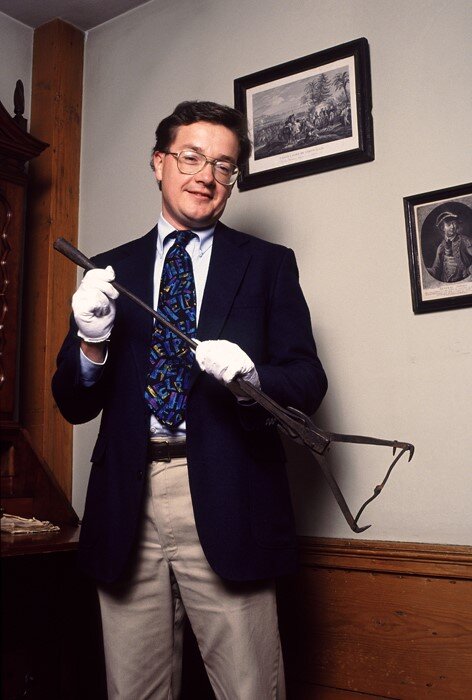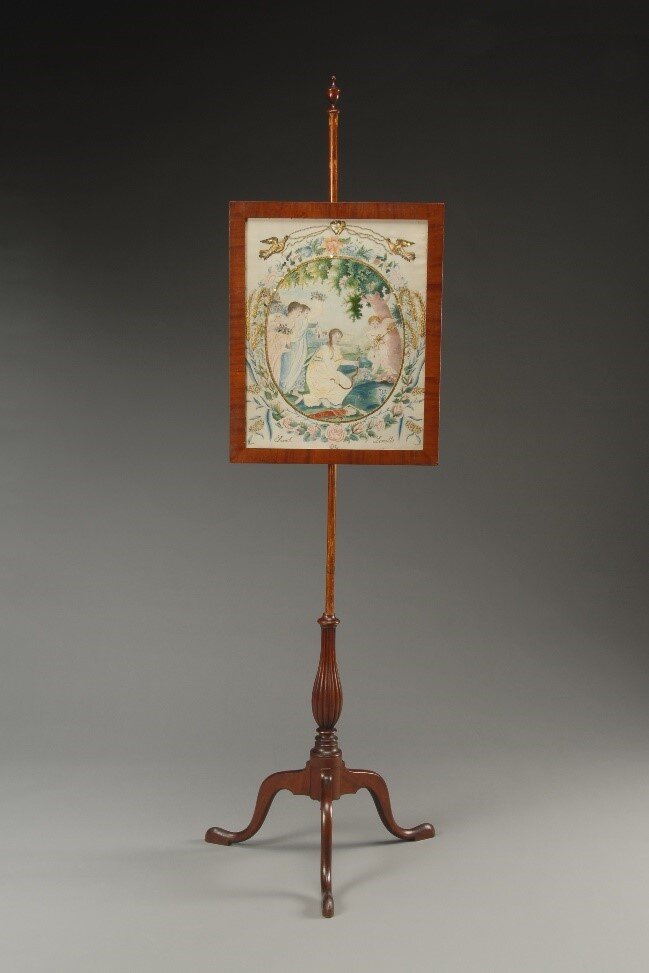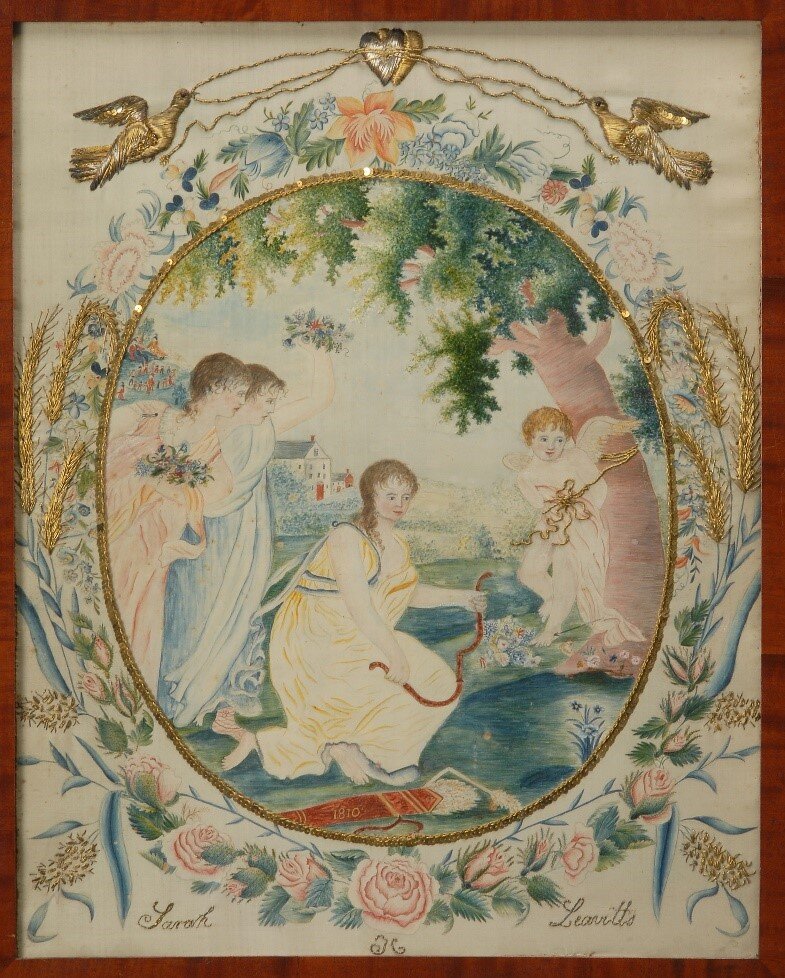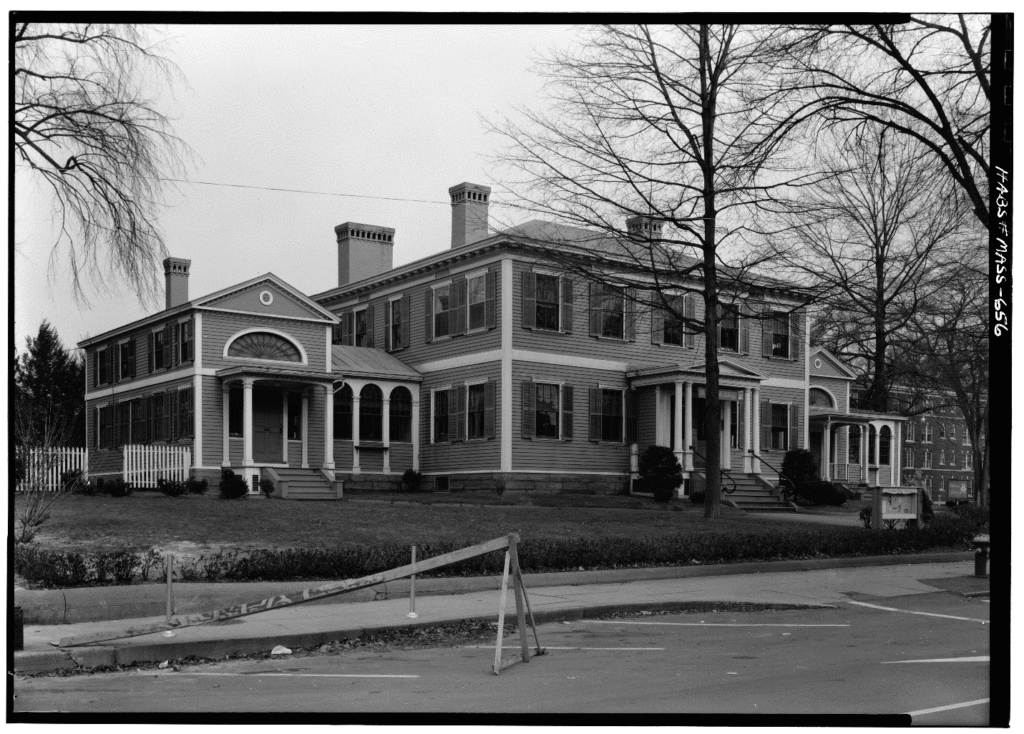What?! How can I identify a single, favorite artifact? That is impossible. My list of Top Ten Favorites is at least two hundred items long! What to do? This blog is due on April 1. Maybe that is it. This is a joke! No. It should be. The last time someone asked for my Favorite Object at Historic Deerfield I appeared in the January 1995 issue of Art & Antiques along with other museum directors and curators mostly from art museums. Wishing to appear a little different, I selected Historic Deerfield’s 18th-century, wrought-iron salmon gig—a handheld fish trap on a long pole—as my object du jour along with my “HELP” tie, which to this day no one has ever mentioned perhaps with good reason.

Since then, I have thought a lot about the concept of ‘favorites’ or more particularly ‘significance,’ and have started each year’s crop of Historic Deerfield Summer Fellows since the 1980s with a presentation on the subject of significance and seeing what you are looking at. Each Fellow that first morning selects a drawer out of an unknown object, and after we discuss significance and reading the unspoken language of connoisseurship, they each tell me what the fabric of their drawer “says” about where it was first made and used under what sorts of conditions.
The real question in applying the principles of connoisseurship is: What is the composition of a significant or desirable object, especially from the perspective of a cultural history museum? Over the years I have come to a sequence of conclusions, which Jean Burks and I published in our book, Rich and Tasty: Vermont Furniture to 1850.[ii] To paraphrase considerably, there are nine basic categories of significance for you to consider in selecting your favorite objects: Design, Precedence, Materials, Craftsmanship, Ornamentation, Innovation, Rarity, Originality, and Provenance. Excellence or superiority in only any two of them, I believe, elevates an object to significance. If your object earns high grades upon analysis in five or six, or certainly eight or nine areas, then you hold an object of probable museum significance. That is high praise!
Let’s construct your report card, so that you can practice your connoisseurship in the comfort of your own home: 1) DESIGN combines the full functionality of the object with pleasing proportions, which when at a high level appears fluid; 2) PRECEDENT embraces the fact that there is nothing new under sun, making the ideas behind your object important to understanding it; 3) MATERIALS are each of the physical resources invested in making your object, the sources of which reflect the economy and environment in which it was made and first used; 4) CRAFTSMANSHIP is the mastery of each of those materials and the ability to merge them efficiently to realize the design; 5) ORNAMENTATION captures daring eye-hand coordination in the manipulation of the workmanship of risk that threatens destruction with one slip of the wrist (so sayeth David Pye in The Nature and Art of Workmanship); 6) INNOVATION can reside in the design, materials, craftsmanship, and/or ornamentation invested in an object and proves that the best items occasionally result in something new under the sun; 7) RARITY is relative to the surviving numbers of a kind of object and has little to do with financial value; 8) ORIGINALITY connotes exceptional, surviving condition of the original parts and surface of an object relative to its antiquity; and 9) PROVENANCE is the line of private ownership and use from the construction of the object to the present that conveys an understanding of the social and cultural contexts through which the object has traveled over time.
Like many exciting cultural history museums across the nation, Historic Deerfield owns a high percentage of significant objects; far too many for me to single out just one. However, as an example of an object that earns high grades in most or all of our nine measures of greatness, we own Sarah Hooker Leavitt’s pole screen (2007.19), which was made in Hartford, Connecticut, as well as Deerfield and Greenfield, Massachusetts, in 1810. While beauty is not one of our nine areas of interest in assessing cultural significance, you may wish to argue for its inclusion and should. Subjective though beauty is—in lying in the eye of the beholder, the pole screen is nevertheless a beautiful object.


Pole Screen by Sarah Leavitt and attributed to Daniel Clay, Hartford, Connecticut, or Deerfield and Greenfield, Massachusetts, 1810. Silk, wrapped metallic silk threads, watercolors; cherry. (2007.19) Museum Collections Fund.
In this instance, the pole screen embraces at least two functions: the need to protect the wax-based cosmetics on a woman’s face from the heat of the parlor fireplace and the desire to illustrate the status, refinement, and education of the needleworker framed for suspension on a design adapted from a tripod candlestand. Antecedent pole screens, which are mostly British and European, predate this example by as much as a century. Here, the family turned to Greenfield cabinetmaker, Daniel Clay (1770-1845), to construct the cherry stand for the artwork.
Sarah Hooker Leavitt (1797-1837) was the daughter of Judge Jonathan Leavitt (1764-1830) and his wife, Emilia Stiles Leavitt (1762-1833) of Greenfield, Massachusetts, and was also the granddaughter of the Reverend Ezra Stiles (1727-1795), President of Yale College. She skillfully rendered her needlework and watercolor masterpiece on silk with metallic-wrapped silk threads and gold sequins beneath garlands held by three-dimensional eagles, at either the Misses Patten School in Hartford or at Deerfield Academy under the direction of a Patten school alumna, Jerusha Mather Williams (1783-1844). Her subject is inspired by the 1777 English engraving, “Cupid Bound by Nymphs,” by William Wynne Ryland (1732-1783), which was inspired by a painting by Angelica Kauffman. The pole screen, fragile as it is, survives in exceptional condition and once held pride of place in the modern, neoclassical house designed by architect Asher Benjamin (1773-1845) for Judge Leavitt in 1797.

Leavitt-Hovey House, designed by Asher Benjamin for Judge Jonathan Leavitt, Greenfield, Massachusetts, 1797. The building is currently used by the Greenfield Public Library.
This primer on the nine points of connoisseurship is easy to memorize and to take with you in the quest for significant art and antiques. From DESIGN to PROVENANCE, our path to significance will take you to exotic places and surprising conclusions as far as your imagination carries you and as close as the next room.